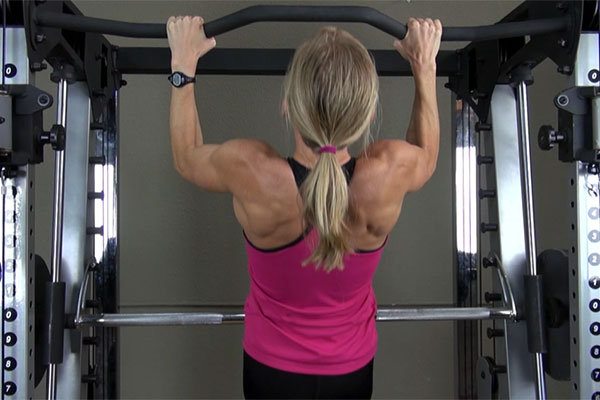Most triathletes know that they should be doing strength work, but not everyone knows why it’s necessary, or what exercises to do.
Strength training is a vital part of the sport if you want to continue doing triathlons in the years to come, because without strength training comes injuries. These injuries are brought on by muscular imbalances and overuse or wearing down of tendons that are pulled the wrong way by tight muscles or poor technique. The proper strength training routine can help alleviate these problems, by accomplishing the following:
- Rewiring your muscle memory to move in the most efficient ways that avoid putting strain on the wrong areas. For example, teaching the body to drive from the hips instead of the quad while running.
- Building and strengthening undeveloped or inactive muscles so that imbalances don’t cause injuries or make them worse. For example, strengthening the interior quad muscle (the vastus medialis) if the exterior quadricep (the vastus lateralis) is overly dominant, causing knee pain by pulling the knee out of alignment while riding.
- Creating mobility that allows full range of motions. For example, building shoulder mobility and strength to not only avoid injuries in the pool, but to increase your speed and efficiency.
We’ll look at examples of core and upper body examples in this post.
Core Exercises
It may not seem like your core (trunk muscles including abs and back) is that important for swimming, riding, or running, but a weak core may be holding you back, because the core is active in all three. For swimming in particular, having a strong, stable core will help you rotate efficiently in the water and produce more power per stroke.
Good exercises to include in your routine include:
- Hip Raises – Lying on back, extend feet straight up towards ceiling with a slight crunch. Release back down. Repeat for 8-12 repetitions.
- Elbows to Knees – Lying on your back with your knees bent, curling your knees to your chest as you raise your chest. Repeat for 10-20 repetitions.
- Lower Back Bridge – Lying on your back with your knees bent, raise your hips by squeezing your glutes (butt). Hold for a second then lower to ground and repeat for 10-20 repetitions.
- Front Plank and Plank Variations (Side Plank, Side Plank with Rotation) – Moving from one side to the other, rolling or passing a ball or dumbbell underneath you, and going from plank forearms to pushup position. Videos: Front Plank, Side Plank, Side Plank with Rotation.
For videos of more core exercises please see our library of core strength exercises.
Injury Prevention and Strength Training for Swimming
The most common swimming injuries are caused to the shoulders, even though the shoulders are not the predominant, or even one of the top four dominant, muscles used while swimming. The following can help loosen up and build strength in your shoulders for injury prevention and injury recovery:
- External rotation for rotator cuff—using a band or a machine to perform the external rotation exercise.
- I’s, Y’s and T’s —With a low-weight dumbbell (2 to 8pounds is plenty), bend over with back straight and knees bent until your back is nearly parallel with the floor. Lower and raise the weights to the level of your body and back down to touching. Keep your arms straight out to the front for the I’s, at a 45 degree angle forward for the Y’s and 90 degrees to the side for the T’s and Y’s as raise and lower the dumbbells until they are parallel with your back.
- Hang – Hang from a pull up bar, making sure to disengage your lats, shoulders, and other muscles that are not necessary for holding onto the bar. Go for 20 seconds at a time, focusing on letting your body just hang there and stretching out.
- While in “Child’s Pose,” put one arm through to the opposite side of your body, back of hand to the floor, and press down on that shoulder while rotating your head (which will also be touching the ground) to the other side. This is a great stretch to do before or after swimming, and after rotator cuff exercises.
For videos of more upper body exercises please see our library of upper body strength exercises.
We’ll explore exercises for lower body strength training to build speed and injury resistance in our next blog post.
Please note: If you’re unsure how to do an exercise properly, be sure to reach out to qualified fitness professional who can demonstrate proper form and correct your form when you perform the exercise.


